Bats of Reserva Don Luis
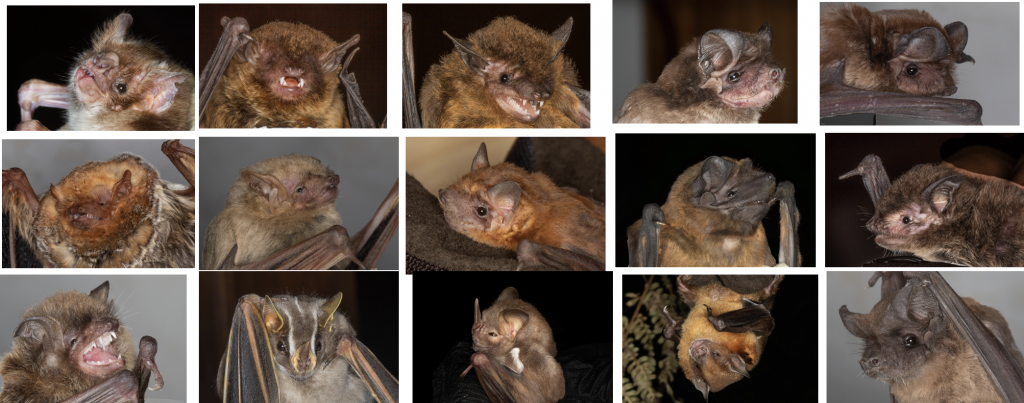
Bat Species of Ibera
The Esteros del Ibera is a vast, relatively undiscovered wetland and, until recently, little study has been done on its bat species and certainly none in the northern gateway known as Cambyreta.
Due to the amount of water and thus insects, it is a paradise for insectivorous bats. Limitations are the amount of available roosts as there are few buildings and the trees are generally shorter than 15m. It is likely that bats come to hunt in the area from some of the small towns and villages around the wetlands. We also have an abundance of native fruit which attracts fruit eating species especially in the warmer months.
However we have found several tree roosts and the two houses, cabana and shed at the reserve are teeming with bats – mostly Molossus temminckii or Dwarf Dog-faced Bat and Eumops patagonicus or Patagonian Bonneted Bat.
We are well underway on a new bat call library for Corrientes/Misiones, and for this we need many bat recordings. We have already recorded around 16 different species of bat around the houses usually using a static recorder such as a Wildlife Acoustics SM4Bat. These we are placing in remote areas for around a week at a time and analysing the results using cluster analysis with Kaleidoscope Pro. We also record all hand releases of insectivorous bats.
The large lakes in Ibera are ideal for the family Noctilionidae which are known as the fishing Bats. We captured both Noctilio albiventris and its larger cousin, Noctilio leporinus along the banks of the River Parana in 2018. They both hunt low over the water, the former hunting insects and the latter small fish. We have some good recordings of both species on release and the shape of the pulse is very distinctive. In Oct 2025 we picked up the echolocation of Noctilio albiventris which is a new family of bats for the reserve.
The majority of our bat research nowadays includes capturing bats for ID and biometrics in Corrientes and surrounding provinces, in particular Misiones. We have some high end equipment including 2 Harp traps, 1 triple high set up as well as a double high, many singles, hand nets etc. We also have a team of volunteers which assist in the running of our night netting sessions.
Our authorisations to conduct bat research in the province of Corrientes have been approved by Recurses Naturales and Parques y Reservas. We also now have authorisation to conduct research in Misiones, our neighbouring province to the NE, which has several new species for us to study. We have been asked by the Ministerio in Misiones to help with bat classifications in the province.
We put up several wooden Kent bat boxes at the reserve and one is constantly occupied by up to 9 small Molossidae bats, most likely Eumops patagonicus, the Kent style box by Molossus fluminensis. We designed a “Bat Condo” based on the Wisconsin design and that has been up at the reserve since June 2018. So far we have only seen Myotis and Molossidae species using this large bathouse but often come across various bat droppings so other species may also use it.
During our capture/release sessions spanning 10 years, we have registered 16 different species of bat at our reserve.
We were honoured in 2019 to receive an AICOM award for Reserva Don Luis (see below). This is awarded to a limited amount of reserves and sites that have a population of bats and in which active bat conservation takes place.
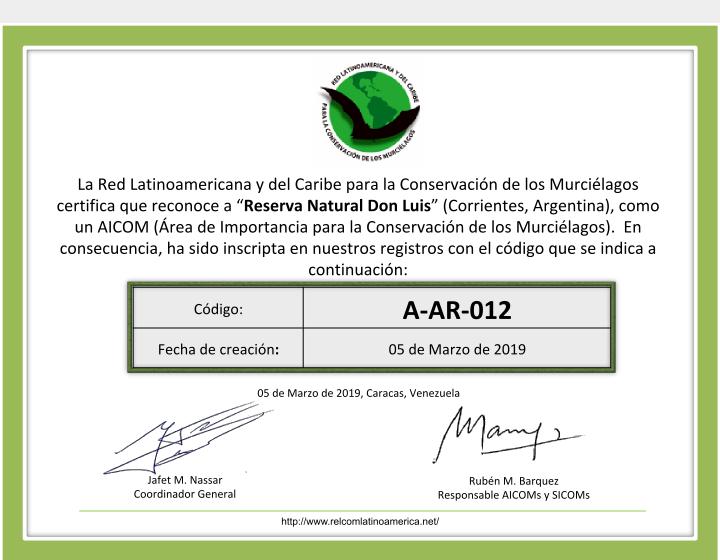
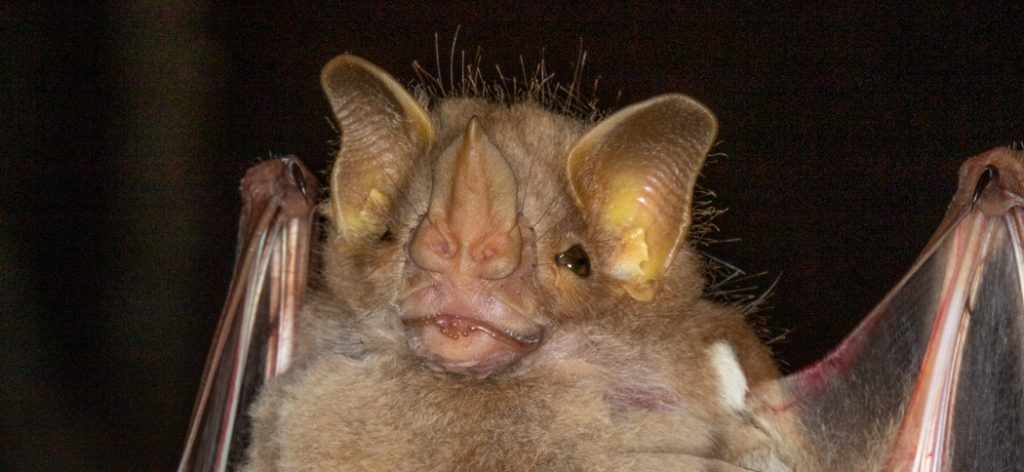
We first captured this medium sized frugivorous bat in a private reserve in Misiones in March 2018. In fact we captured two together in the same net – a post lactating female and a juvenile. They are quite rare. Since then we have caught several in Misiones, and in March 2023 we caught one in our net in Reserva Don Luis, in Monte Grande. We believe that this is the first Pygoderma bilabiatum captured in the Esteros del Ibera.
It’s striking features are the bright white marks on the shoulders, the large bulbous greenish eyes and the yellow interior of the ear including the tragus. The upper lip gives the appearance of being double. The long dorsal fur is tricolour – dark/pale/dark and the ventral fur is more or less unicolour and paler. There are bare patches of pink skin on the ventral side of the shoulders The weight of the female was 24g and the juvenile 16g. Forearm lengths were slightly smaller than those of Sturnira lilium – 41.1 and 38.0mm respectively.
This bat belongs to the family Phyllostomidae and is uncommon in the NE of Argentina.
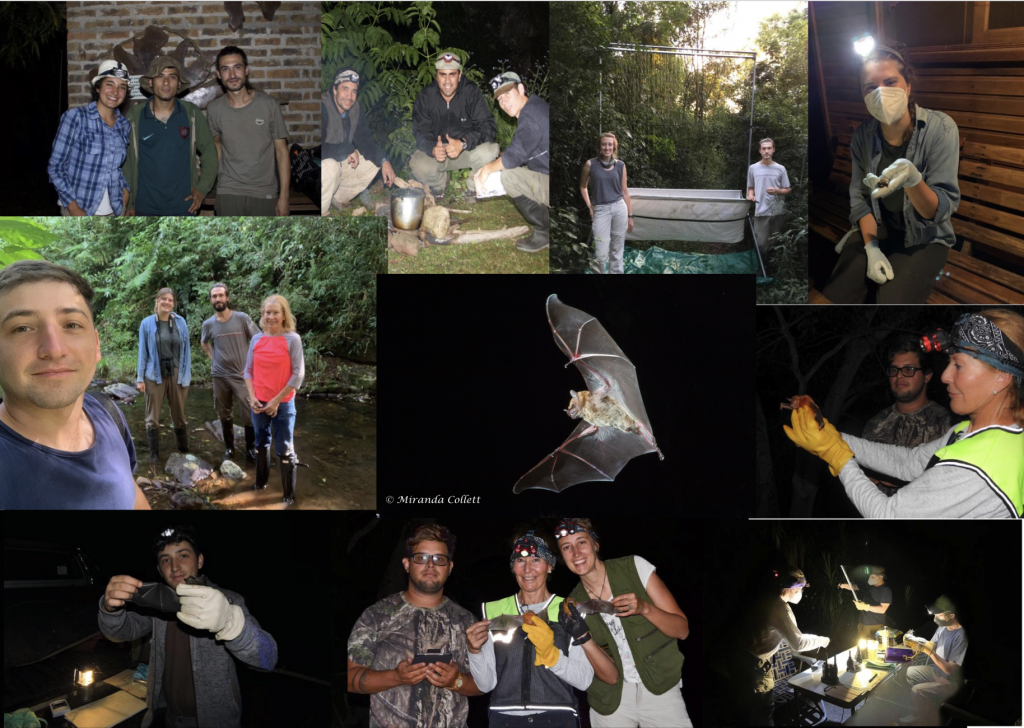
Collett Trust Bat Team 2015-2024
Our Dedication to Bat Preservation
At Fundación Cambyreta para la Naturaleza, we prioritize the conservation of bats as a core aspect of our mission. Understanding the significant ecological functions they serve, we commit to sustainable actions that safeguard their environments and encourage biological diversity. Through thorough research and vigilant monitoring, we aspire to learn more about these incredible beings and execute programs that enhance their preservation and prosperity in nature.
We have recently discovered a new species at the reserve, Myotis barquezi, a newly described Myotis. It is a brightly coloured bat with red dorsal fur and brilliant orange ventral fur. It is slightly larger than the other Myotis at our reserve. The holotype was discovered from a museum sample in Salta; our examples are the first live ones and so far we have captured/released 46 of these previously unknown Myotis.
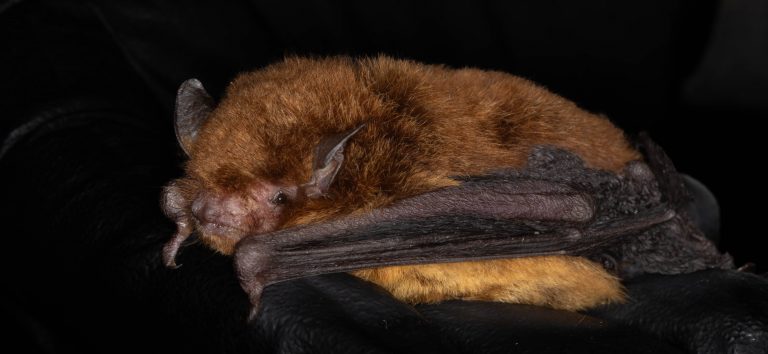
Our creative approaches have yielded outstanding outcomes. By installing bat boxes and a bat house, we have created secure resting spots, aiding species such as Eumops patagonicus, Molossus fluminensis, Myotis & Eptesicus species. During the past 10 years or so we have at least quadrupled the quantity of bats roosting in and around our garden.
